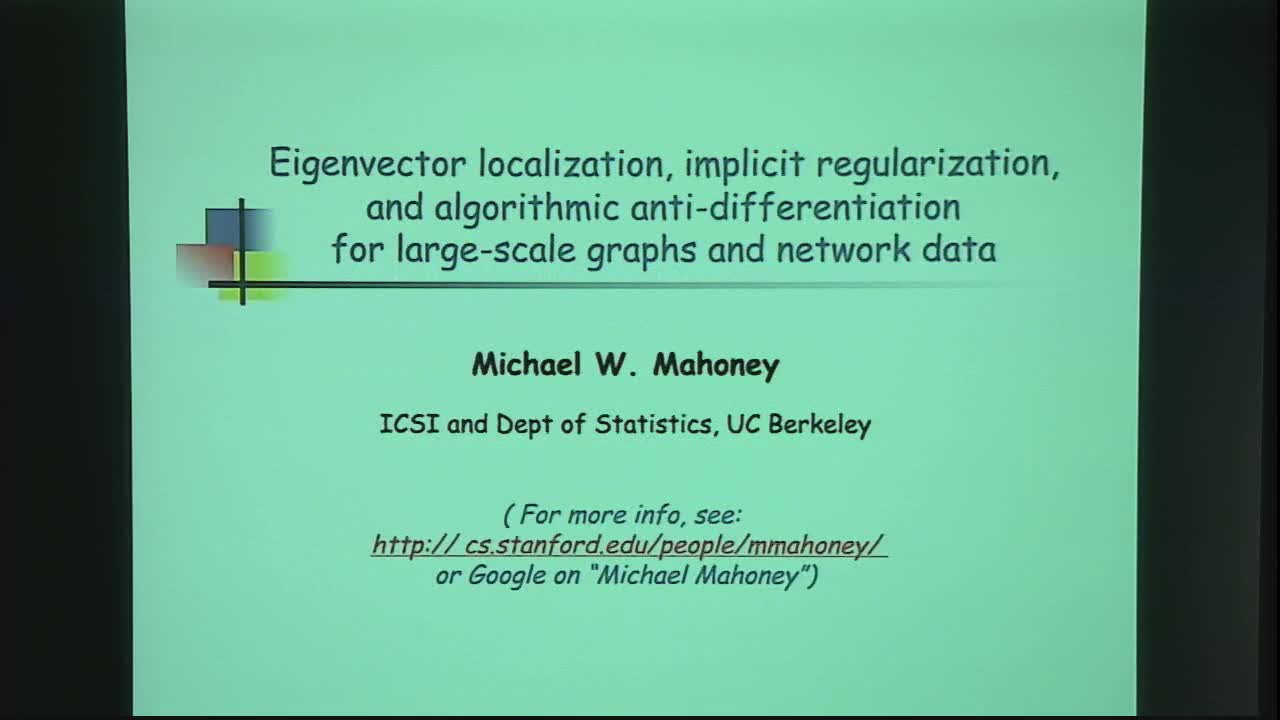Eigenvector Localization, Implicit Regularization, and Algorithmic Anti-differentiation for Large-scale Graphs and Networked Data
Presenter
April 30, 2014
Keywords:
- Graph algorithms
MSC:
- 05C85
Abstract
Although graphs and matrices are popular ways to model data drawn from
many application domains, the size scale, sparsity properties, noise
properties, and many other aspects of graphs and matrices arising in
realistic machine learning and data analysis applications present
fundamental challenges for traditional matrix and graph algorithms.
Informally, this at root has to do with the observation that small-scale
or local structure in many data sets is often better or more meaningful
than large-scale or global structure, which is exactly the opposite of
what many traditional asymptotic tools typically implicitly assume. For
example, there might be meaningful small-scale clusters in social networks
that are tree-like or expander-like at large size scales. Here, I will
describe how eigenvector localization can be used to justify these sorts
of claims, how localization can be engineered in a principled way into
popular matrix and graph algorithms in order to characterize local
properties in large data sets much more generally, and how seemingly-minor
details in the approximate computation of localized (as well as
non-localized) objectives can make a large difference in the usefulness of
a given method in downstream applications. A common theme will be the
critical role of what can be called implicit regularization---that is,
regularization not in the usual sense of explicitly adding a
regularization term and solving the modified objective exactly, but
instead as an implicit side effect of heuristics that are often used to
make approximation algorithms scale well---as well as the question of what
is the objective function that an approximation algorithm implicitly solve
exactly.
